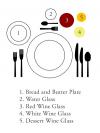| Online: | |
| Visits: | |
| Stories: |

| Story Views | |
| Now: | |
| Last Hour: | |
| Last 24 Hours: | |
| Total: | |
Virtual Reality? How About Virtual Lasagne?
Virtual Reality can create a world without calories or food intolerances.
Diabetics can eat donuts, dieters can indulge in fried chicken, Jews can eat bacon, and every child can have peanut butter—and it’s all sugarless, low calorie, kosher, and allergen-free.
Virtual Reality is not pie in the sky.
VR devices are already a reality with Google Cardboard, Oculus Rift, and Samsung Gear VR headsets, and major tech players are gearing up with strategic partnerships and billion dollar acquisitions. While food scientists work out the fine points of virtual taste and texture, developers are bringing VR food applications to market.
YouVisit Restaurants offers VR tours of an impressive list of New York City restaurants. It’s more 3-D tour than fully immersive experience, but the application is free and they’ve signed up hundreds of restaurants including iconic locations like The Russian Tea Room, Tavern on the Green, Delmonico’s, and Le Cirque.
CyberCook Taster calls itself “the next evolutionary step in cooking media.” It’s designed to “tackle the disconnect” between what we read and watch and what we actually cook. The app combines a hyper-realistic kitchen simulation with hands-on, interactive elements.
Virtual Reality meets molecular gastronomy at Project Nourished, developed by the West Coast think tank Kokiri Lab. The project utilizes sensory inputs through a VR headset, external food detection and motion sensors, and aromatic diffusers. The physical food is crafted mostly from algae, seaweed, fruits, vegetables, and seeds bulked up with hydrocolloid polymers and gums, while the simulated dining experience transforms the substances into a savory and sumptuous meal. The plate says ‘vegan, lo-cal, gluten-free’ while the brain is duped into perceiving steak and cheesecake.
Tastes are relatively easy to recreate. Textures are much trickier. The lab-created meals are essentially jello-like substances enhanced with salt, sweeteners, and flavor compounds. Early simulations have focused on foods like steak, lasagna, and fruit pies—all foods with large, regular surfaces and simple geometry—that are easiest to mimic and work well with the sensors.
The ‘Taste I/P’ approach to Virtual Reality removes physical food from the equation.
It borrows from the Voice over Internet Protocol (VoIP) methodology that’s used for the delivery of voice communications over IP networks. Instead of voice messages, Taste Over I/P formulates XML-based taste messages that can travel within existing communications frameworks.
It’s earned the nickname ‘the digital lollipop’ because the transmitter communicates with tiny electrodes that are placed on the tongue. The electrodes receive electrical currents that stimulate the tongue’s heat, sensation, and taste receptors tricking the brain into perceiving flavors. The technology could make it possible to send a taste of cake with a Facebook birthday greeting, or for a television chef to share real time tastes with a viewing audience.
Virtual Reality has a long way to go before it’s the truly immersive, ultra-sensory media experience demanded by food applications.
But the early signs point to its enormous potential, both culinary and clinical, and these early glimpses whet the appetite.








